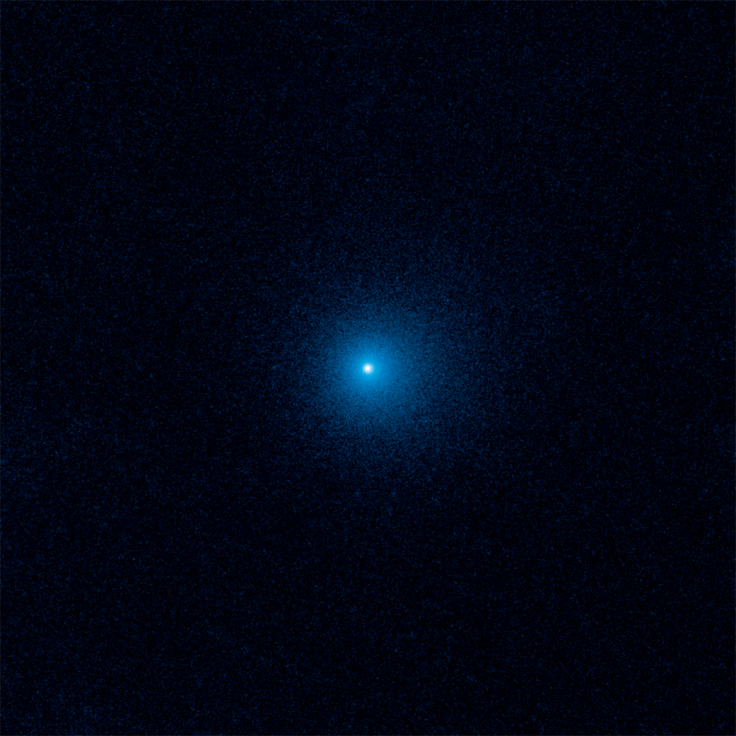Hubble Space Telescope captures Comet Atlas breaking up in rare phenomenon
Comet Atlas disintegrated while it was still at a distance of 146 million kilometers from Earth.
Comet Atlas, also known as C/2019 Y4 has disintegrated completely almost a month after it was discovered to be dimming down and Hubble Space Telescope captured two images that provide "sharpest views" of the comet's demise.
According to NASA, the images of the comet were taken on Monday, April 20, and Thursday, April 23. In the first image, the space telescope identified 30 fragments of the comet as it went through the process of disintegration which is said to have started in March. The second image that was captured three days after, shows 25 fragments of the dying comet that was once believed to become the brightest comet of 2020.
"Their appearance changes substantially between the two days, so much so that it's quite difficult to connect the dots," said David Jewitt, professor of planetary science and astronomy at UCLA, Los Angeles, and leader of one of two teams that photographed the comet with Hubble. However, Jewitt is unsure about why the appearance changes whether it is due to "the individual pieces are flashing on and off as they reflect sunlight" or "because different fragments appear on different days."
New @NASAHubble images show comet ATLAS disintegrating, yielding new evidence that breakups are fairly common: https://t.co/MfdIAf5upv pic.twitter.com/cRsmzd2ylI
— NASA (@NASA) April 29, 2020
Meanwhile, Quanzhi Ye, the leader of a second Hubble observing a team of the University of Maryland, College Park said that it is a thrilling event as it happens rarely. Not very often, fragments of dying comets are visible. Events as such happen only once or twice in a decade.
It is believed that images like these can help scientists understand the disintegration process of comets better.
Comet ATLAS was discovered on December 29, 2019 by the ATLAS Asteroid Terrestrial-impact Last Alert System) robotic astronomical survey system based in Hawaii and remained the brightest comet until March 30. Astronomers predicted that it would reach its closest point to earth by May and might be visible through naked eye. However, it began dimming due to disintegration on Sunday, March 22, and the news was confirmed by amateur astronomer Jose de Queiroz who captured three pieces of the comet on April 11.

The comet remained at 146 million kilometers from Earth when the Hubble Telescope captured these images.
© Copyright IBTimes 2025. All rights reserved.





















